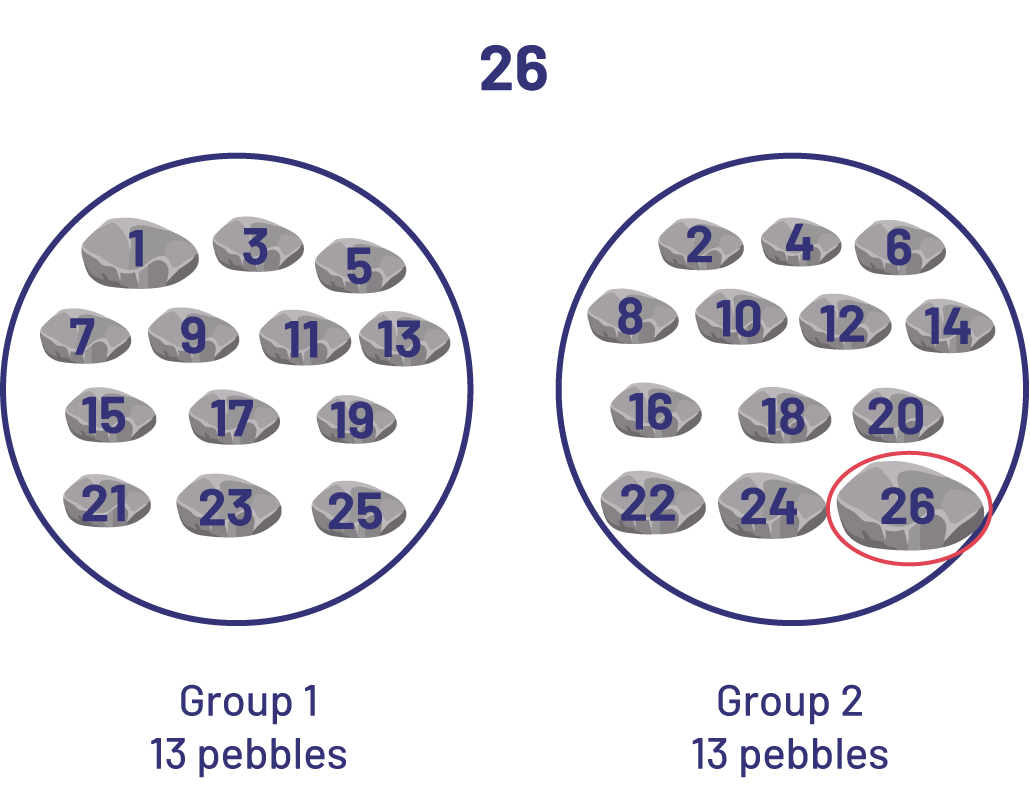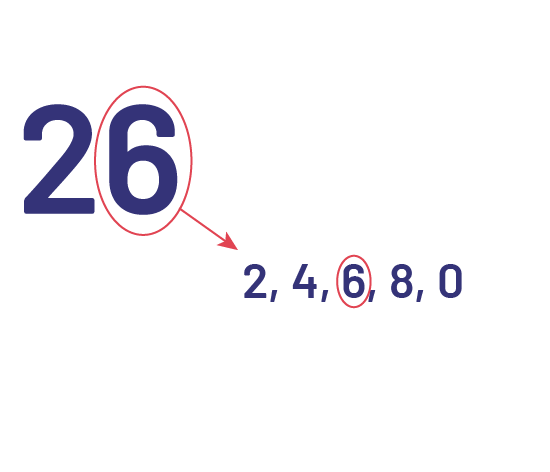B1.5 Describe what makes a number even or odd.
Skill: Describing the Characteristics of Even and Odd Numbers
Divisibility relationships between two numbers are relationships based on division. For example, there is a divisibility relationship between 6 and 2, since 6 is divisible by 2. Studying this characteristic of whole numbers helps students develop their number sense and flexible use of numbers in everyday situations.
With students, however, it is important to avoid focusing on "tricks", terminology and definitions. What is important for students is to develop a conceptual understanding of divisibility through activities that focus on relationships.
If a whole number is divisible into two equal parts, it is an even number; otherwise, it is an odd number. The definition of even and odd numbers is therefore associated with this divisibility or non-divisibility by two.
It is in the context of activities that students should be supported to recognize that all whole numbers with the digit 0, 2, 4, 6 or 8 in the ones place are even numbers, while those with the digit 1, 3, 5, 7 or 9 in the ones place are odd numbers. These observations allow them to quickly recognize whether a number is even or odd without having to check the divisibility by two.
Source: translated from Guide d'enseignement efficace des mathématiques de la 4e à la 6e année, Numération et sens du nombre, Fascicule 1, Nombres naturels, p. 55 et 56.
Students can use manipulatives to discover the connection between even numbers and divisibility by two (for example, by attempting to evenly divide an even number or an odd number of cubes between two students).
Source: translated from Guide d’enseignement efficace des mathématiques de la 1re à la 3e année, Numération et sens du nombre, p. 30.
Example
Karim says that the number 26 is an even number. Is he right? How do you know that?
Strategy 1
Divide a quantity into two equal groups using manipulatives

I started by counting 26 pebbles. I placed one pebble in group 1 and another in group 2. I continued to divide the pebbles like this until they were all placed. I saw that there were 13 pebbles in each group, which is an equal amount. By dividing 26 objects into two equal groups, I could see that 26 is an even number.
Strategy 2
Use even and odd number patterns and a number line

I know that numbers that have 2, 4, 6, 8 or 0 in the ones place are even numbers. In the number 26, the number 6 is in the ones place, so 26 is an even number. To check, I used a number line and count by 2s.

Source: translated from En avant, les maths! 2e, CM, Nombres, p. 3.
